By: Matthew Olson
January 5th 2022
A Guide to Houseplant Propagation
A Guide to Houseplant Propagation
Since the 1970’s houseplants have been increasing in popularity throughout the United States, for good reason. Their ability to tolerate low levels of light allow them to thrive indoors. Many of these plants are native to tropical forests, where little sunlight can penetrate the forest floor. It’s easy to understand why these plants continue to grow in popularity. Studies have shown they can reduce stress and improve air quality. Another benefit of these plants is the ability to propagate them with ease. Propagation is a term that means creating new plants. We’ll look at different methods of propagation to expand your houseplant collection.
Stem Cuttings
One way to propagate houseplants is by cuttings. A cutting is a piece of the plant stem that is separated from the rest of the plant to create a new plant. Many houseplants can be propagated by cuttings. Here’s the steps required to create new plants from cuttings, using Pothos as an example.
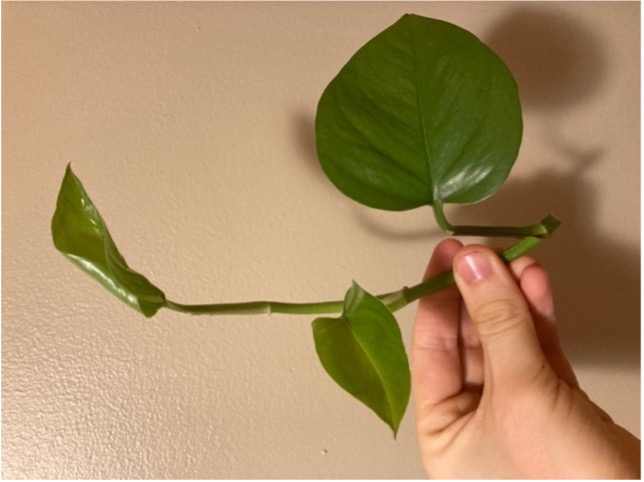
- Cut the stem below a bud, the length of the stem should be 4-6 inches. To create a fuller plant, take multiple cuttings and plant them in the same container.
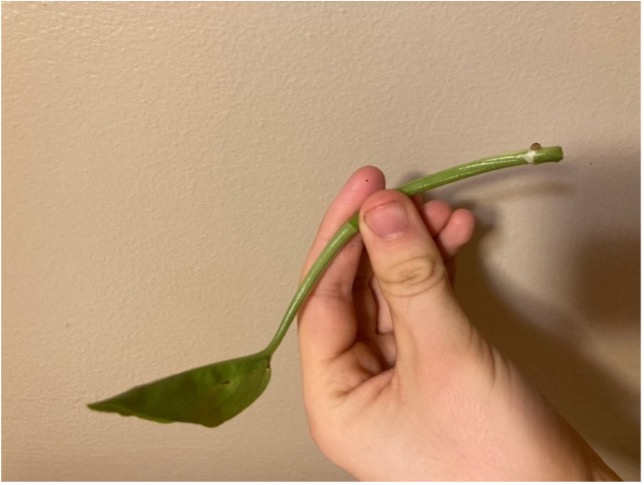 Remove lower leaves, leaving only the top leaves.
Remove lower leaves, leaving only the top leaves.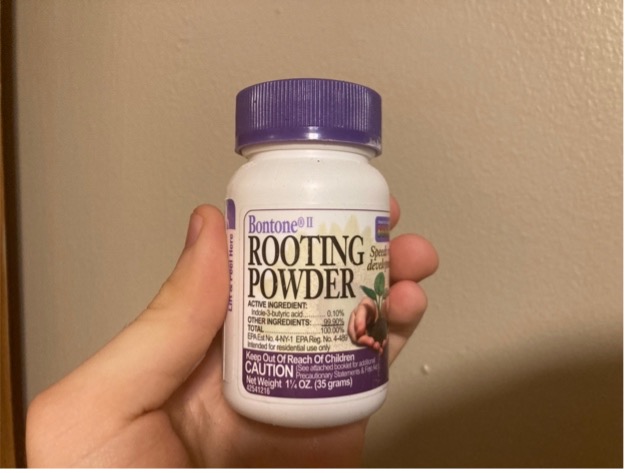 (Optional) Stick the bottom 1-1.5 inches of your cutting into rooting hormone. Many houseplants will root easily without rooting hormone, but it may quicken the rooting process if desired.
(Optional) Stick the bottom 1-1.5 inches of your cutting into rooting hormone. Many houseplants will root easily without rooting hormone, but it may quicken the rooting process if desired.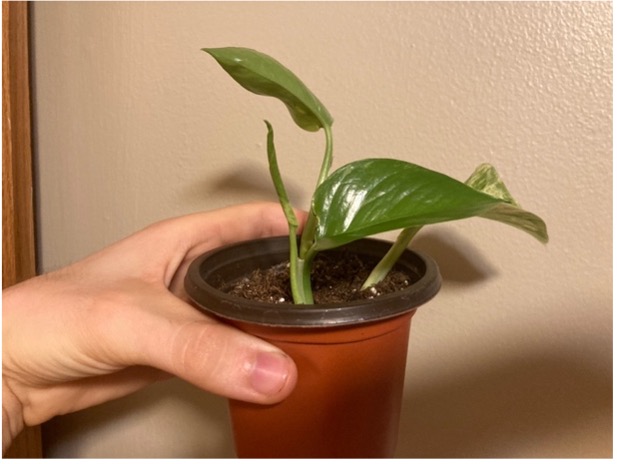 Stick the cuttings into the soil, and gently press the soil around the cuttings.
Stick the cuttings into the soil, and gently press the soil around the cuttings.- Water sparingly and put a plastic bag over the pot to maintain humidity around the cuttings. Make sure the sides of the bag do not touch the leaves, which may result in mold forming.
- Continue to monitor the cuttings for water, and only water when the soil begins to dry. The cuttings have no roots initially, which makes it difficult to absorb the water. Only water in small increments.
Plants can also be rooted in water and transplanted to soil later. The steps to root cuttings in water is the same as rooting in soil, but in a glass of water (no need to cover with a bag).
Division
Division is another method of propagation. Dividing means taking a large plant and cutting it into multiple sections to plant. This results in several smaller plants with increased vigor. Characteristics of houseplants that can be divided include plants that grow fast to form clumps of several stems. A few examples are spider plant, snake plant, peace lily and asparagus fern. Plants that produce single stems normally don’t need division. To divide your houseplants, follow these simple steps.
- Take the plant out of the pot and set on a flat surface.
- Use a knife to cut the plant into several sections, making sure each section has roots.
- Replant each section in potting soil, and water thoroughly.
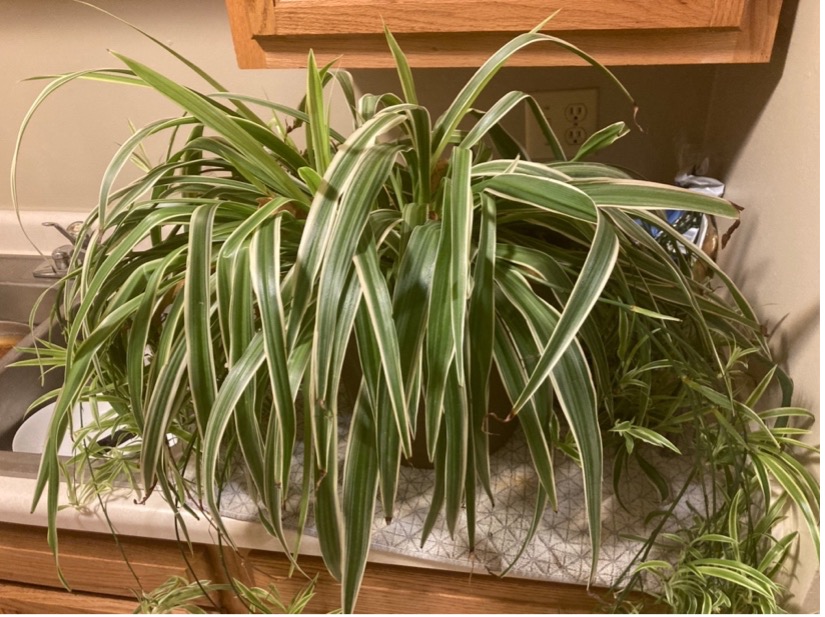
Leaf Cutting
Many plants require stems to produce cuttings, others can be propagated from leaves. Succulents and african violets are plants that can often be propagated from a single leaf. One thing to note is only some types of succulents can be propagated from leaves. If you’re not sure about what type of succulent you’re trying to propagate, you should check with your local extension office or a local nursery. Here’s the steps to propagate an African Violet using a leaf cutting.
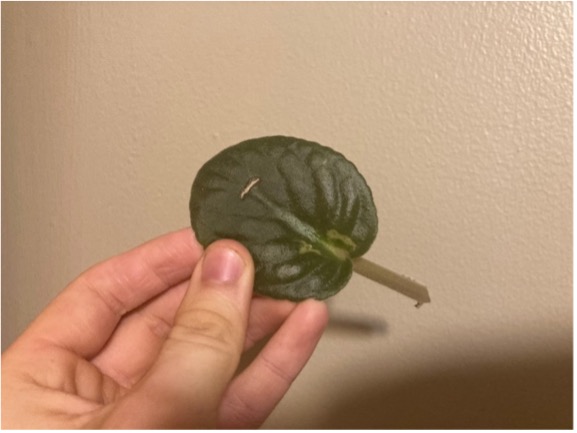 Remove a leaf that is mature, but not old and tough.
Remove a leaf that is mature, but not old and tough.- Cut off the top of the leaf and make the petiole (leaf stem) a half inch long. This will help the leaf put its energy towards growing new roots.
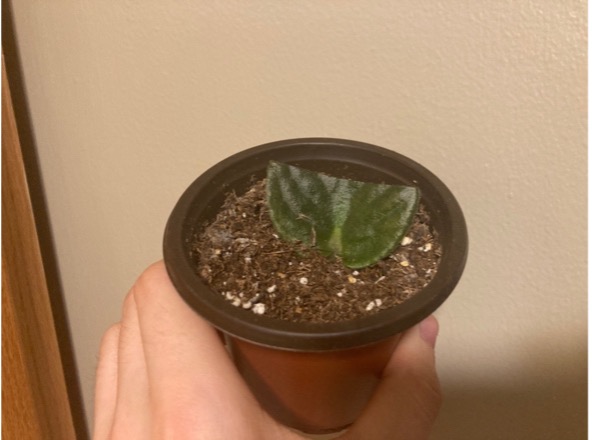 Stick the cutting into a small container of moist potting soil, and cover with a plastic bag to retain humidity. Monitor to check for water needs, making sure the soil stays moist, not wet.
Stick the cutting into a small container of moist potting soil, and cover with a plastic bag to retain humidity. Monitor to check for water needs, making sure the soil stays moist, not wet.- After 2-3 months, new plantlets will form. A few months after the plantlets form, they can be divided form the cutting to create more plants.
Layering
Layering is a form of propagation that allows a stem to form roots while still attached to the plant. In nature, groundcovers will often spread by layering. There are several types of layering that are used in growing plants, but we’ll focus on air layering. Air layering is commonly used to propagate woody houseplants that become overgrown, such as Rubber plants and Crotons. Here’s how you can air layer your woody houseplants.
- Find a branch on the plant and use a sharp knife to cut a 1 inch ring around the outside of the trunk. The cut should be made about 12-18 inches from the end of the branch. Make sure to only cut off the outer layer of the bark.
- (Optional) Apply a small amount of rooting powder to the cut area, this will help stimulate root development. Roots will form without the powder but may take longer to form.
- Take a small plastic bag and fill with moss that is moist, then wrap it around the ring of exposed bark. Use twist ties or electric tape to hold the bag on the branch.

Figure 2 The steps required for air layering.
Photo sourced from ncsu.com/plantpropagation
4. Wait a few months to allow roots to form and grow
5. Once the inside of the bag is full of roots, the bag can be removed, and the branch cut off below where the roots formed.
6. Plant your new tree in potting soil, and water thoroughly.
I hope this guide helps create more plants for your home. Indoor greenery goes a long way in keeping away the winter blues. I look forward to getting outside into the garden again soon, but for now, I’ll keep growing my indoor garden, which is almost as fun. Happy gardening!
